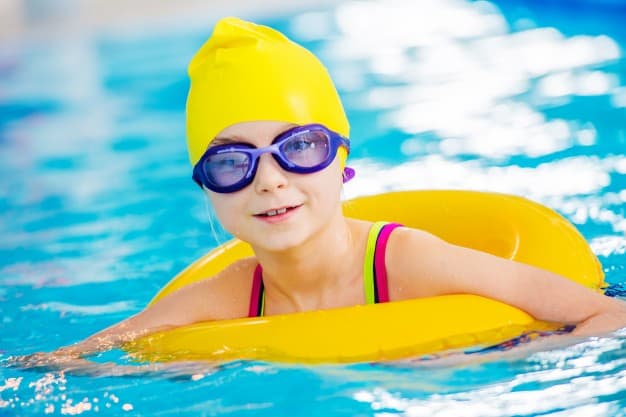Many parents feel frustrated and very anxious about making the right treatment choices for their children. I am therefore writing a blog series to share some information with you on some of the treatment approaches I use within my private practice.
What treatment approaches are available to help my child with Cerebral Palsy improve their motor function?
This list below shows some of the treatment approaches available to your child. Your physiotherapist will work alongside the wider healthcare team of doctors and therapists. They will help you decide which treatment approaches may be suitable for your child.
This is not an exclusive list of treatments.
Physiotherapy Specific Interventions:
- Neurodevelopmental Treatment
- Goal directed strength / functional training (GDT)
- Active and passive sustained stretching
- Aquatic Therapy
- Early Intervention (EI) and Home Exercise Programme (HEP) – These are not specific treatment techniques though an essential approach.
- Mobility devices and equipment (specialised seating and standing frames)
Therapy and Medical Treatment interventions:
The interventions below are often carried out with a team of healthcare professionals such as physiotherapists, orthotists, orthopaedic consultants, occupational therapists, neurologists and paediatric consultants.
- Optimal Segmental Kinematic Alignment Approach to Rehabilitation (OSKAR) – Orthotics / Leg splints
- Lycra
- Serial casting
- Constraint-Induced Movement Therapy (CIMT)
- Single Event Multilevel Surgery (SEMLS)
- Botulinum Toxin Injections and or tone modulation medication
- Neurosurgical (Selective Dorsal Rhizotomy / Deep Brain Stimulation / Intrathecal Baclofen Therapy)
I have not discussed Complementary and alternative therapies for cerebral palsy in this series of blogs.
I shall continue this blog series with a brief overview of aquatic therapy which I use in conjunction with other therapeutic interventions when treating children with Cerebral Palsy.
What is Aquatic Therapy?
“A physiotherapy programme utilising the properties of water, designed by a suitably qualified Physiotherapist. The programme should be specific for an individual to maximise function, which can be physical, physiological, or psychological. Treatments should be carried out by appropriately trained personnel, ideally in a purpose built, and suitably heated Aquatic Physiotherapy Pool” (ATACP 2014)
Aquatic therapy is therapy performed in water to assist in rehabilitation and recovery. It is a form of exercise/therapy in warm water and is a popular treatment for patients with neurological conditions such as cerebral palsy and acquired brain injury.
What is Pool Based Physiotherapy?
Pool based physiotherapy is physiotherapy sessions held in regular swimming pools. It is also greatly beneficial for the right child. I have taken several children to regular swimming pools to carry out treatments using the water for strengthening and to help develop motor skills.
How could pool based physiotherapy or more specialised aquatic therapy help my child with Cerebral Palsy?
Every child is unique and will have different functional goals. It is important to discuss with your physiotherapist if pool based and or aquatic therapy can help your child.
Here is a list of some of the benefits of aquatic therapy:
- Can help to reduce pain and muscle spasm
- Helps with relaxation
- It is a great way to help strengthen weak muscles
- Improve endurance / cardiovascular fitness
- It is a fun way to implement physiotherapy for children through play, functional and fun activities in the water.
- The water is a good medium to help with gross motor skills such as sit to stand, standing balance, walking etc
- A key element is facilitation (using handling / sensory inputs to improve motor skills). This can be much easier using the water to help with moving your child into different positions and postures.
- Improves circulation
- Gives the patient encouragement and confidence in carrying out exercises on land.
- Warm water stimulates blood flow which can help with muscle relaxation
- It is great rehabilitation therapy following surgery (orthopaedic and neurosurgical).
- It is important that the treatment is individualised and tailored to your child’s specific problems, aims and goals.
- This approach is implemented with an intensive land based home programme.
How do I know if my child is suitable for water based therapy?
Contraindications are reasons why your child may not be suitable for aquatic / water based therapy. You will also be asked to complete a separate consent form and a contraindication checklist to ensure you and your child are happy and safe to carry out this type of therapy.
Top Tip
Write down all your questions about the different therapy approaches you are considering and discuss these with your physiotherapist and medical team. Some will not be suitable for your child and your team can explain why. Some will require a special assessment with a team that have expertise with that procedure / treatment.
Cerebral Palsy is the most common childhood movement disorder in the UK. There are lots of treatments options available for your child. And lots of ongoing research to investigate the benefits of these treatment options.
Contact us for an informal chat to ask any questions specific to your child. We have children’s physiotherapists who are specialists working with children with Cerebral Palsy within Surrey, Sussex, Kent, Hampshire and parts of London. https://wanderlusttherapyforkids.com/contact/



